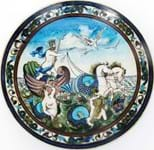
Ian Butchoff, who deals in high-end antique furniture and works of art from Kensington Church Street in London, believes that uncertainty is the biggest problem.
“I recall trying to export things before the EU was born and it was a nightmare. You couldn’t sell things speculatively in Europe. You had to have proper proforma invoices,” he says.
“Moving from one border to another is potentially problematic and burdensome on paperwork. I suspect there will have to be some sort of freedom in the end.
“But when it comes to insurance, what is being covered? It’s really just theft or damage, so it’s a percentages game.”
Buyer beware
Helen Carless, managing director of Lawrences of Crewkerne and chair of the Society of Fine Art Auctioneers, agrees that uncertainty in the short term is the biggest challenge.
“Increased delays at customs and more complex paperwork expose goods in transit to greater risk of theft, damage or loss. Buyers and sellers would need to be aware of this and ensure they are covered accordingly,” she says.
“In most circumstances, an auctioneer shipping items to a buyer overseas will be doing so at the buyer’s expense, and so it would be up to that buyer to satisfy themselves that they are adequately covered.

Helen Carless.
“Nonetheless, auction houses will want to do everything in their power – through better information available via their websites, for instance – to safeguard international business from being discouraged by any barriers that do arise. It could be argued this, in itself, would be a form of self-insurance.”
Sandy Rich, specialist art insurance consultant at Richard Thompson Insurance Brokers, is most concerned about the restriction on the free movement of goods.
“We hope this won’t lead to any invasive inspections for parcels and packages at international borders between Britain and the EU,” he says. “There are risks every time a work of art is moved but these are mitigated through direct transportation and by packaging being allowed through undisturbed.”
He recalls past problems with US Customs.
“They could be particularly inquisitive about parcels. In some ways this was reassuring, but one disadvantage was that excellent packaging was often interfered with and objects inexpertly handled, leading to damage.”
There is no recourse against customs authorities, Rich says. “If we see a sort of hard border with invasive customs inspections being introduced, then we could see an increase in the number of claims for damage.”
Milton Silverman, ATG’s legal columnist and a partner at specialist law firm Streathers, also warns about delays. “A common concern is the additional waiting time which may be incurred due to likely extra customs and document checking. This could give rise to an increased insurance risk, as a valuable work of art just stands in the lorry, awaiting clearance.”














